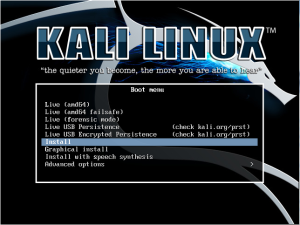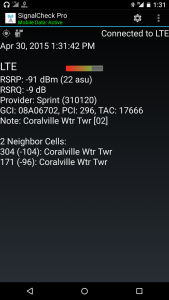The Nexus 5 may have been discontinued by Google but the phone still packs a powerful punch for those interested in analyzing the cell network they are connected to. This blog post is the first in a series of posts explaining how to better understand the cellular network.
 To properly review the network information, you will need to purchase the app Signal Check Pro. The pro version contains many logging features, which will make exploring the network much easier.
To properly review the network information, you will need to purchase the app Signal Check Pro. The pro version contains many logging features, which will make exploring the network much easier.
Signal Check Pro, when launched, will display information such as what is displayed on the left. Depending on the network you are connected to, you may see various different pieces of data. In this example, I am connected to the Sprint LTE network, running on Band 25 (1900MHz)
The signal strength bar graph at the top is self explanatory, and the RSRP and RSRQ are signal strength indicators. Each panel (or directional antenna) will have a unique GCI to identify the panel, however Sprint conventionally assigns all panels on a specific tower the same first 6 hexadecimal numbers. For instance, in the example to the left, the Coralville water tower, all the panels will share the same beginning GCI of 08A067xx. Each panel will have a PCI ID as well, but these may not be unique with some PCIs being repeated. The TAC represents a regional code shared among all sites within a geographic area. Continue reading →




